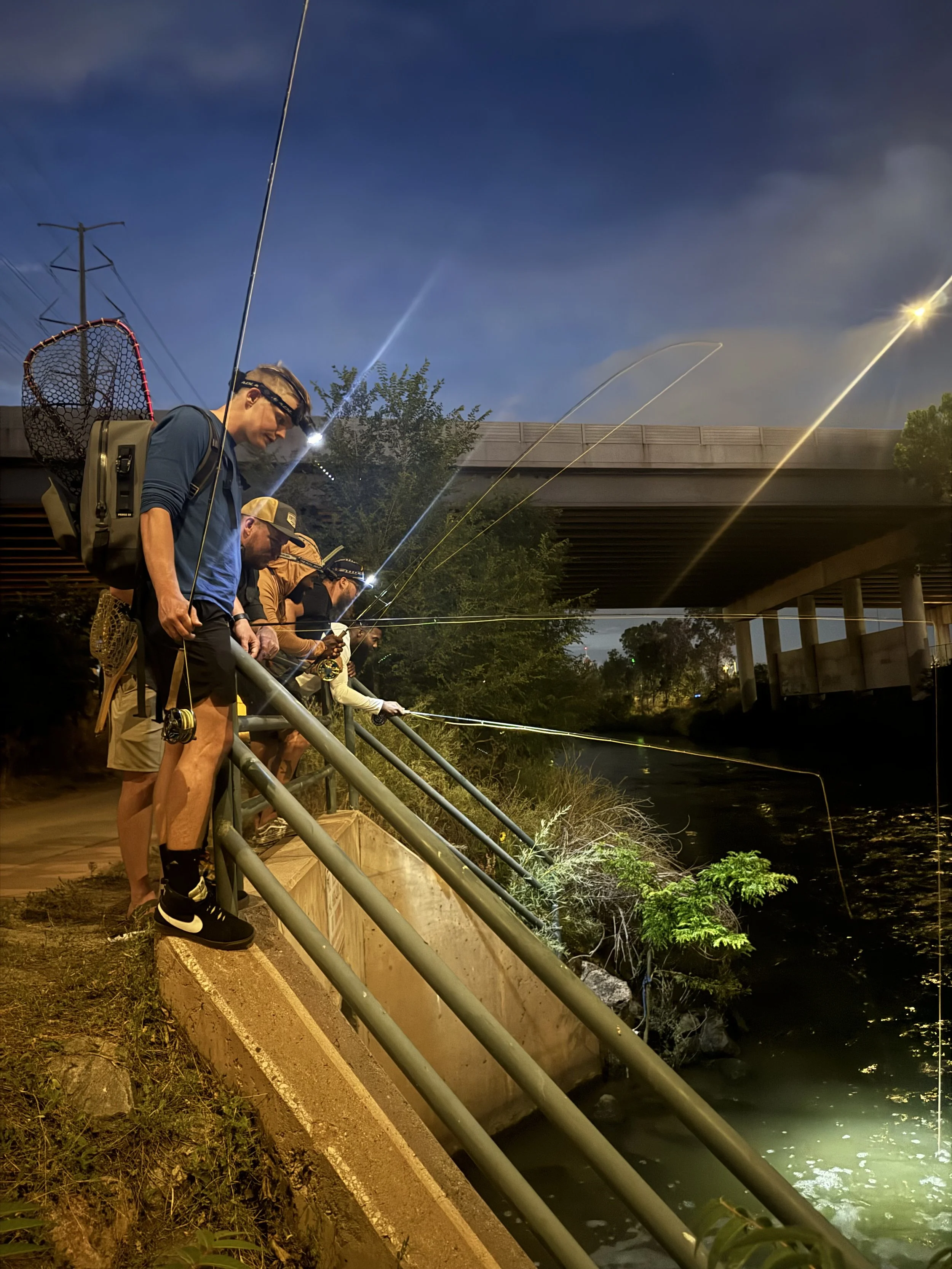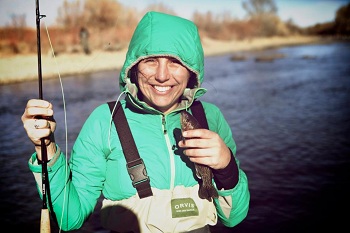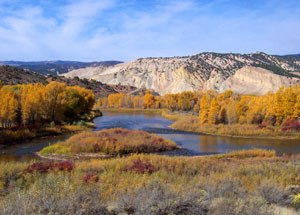We know you are all anxious to hear what presenters we have lined up for Rendezvous this year, so here is a sneak peek into our Rendezvous weekend.
The theme for Rendezvous 2013 is SUSTAINABILITY. We tend to think first about the sustainability of Colorado's rivers, when in fact the sustainability of our organization is what allows us to "conserve, protect, and restore." Ongoing fundraising programs help us fund restoration projects. Succession planning helps us ensure continuity and board effectiveness. Youth education programs help us groom future members and leaders. And so we sought to achieve a balance of presentations that address the sustainability of both our rivers and our organization.
This year we have something very special planned for the Saturday night banquet:
Sustain This! The Many Landscapes of Trout
Presented by Mark Lance
This program captures a photographer's view of the most spectacular landscapes in the world of fly fishing. Though his compelling images, Mark takes the audience on a fly fishing journey from the heights of the Patagonian Andes, to hallowed fisheries of the Rocky Mountain West, to forbidden rivers of the Kamchatka peninsula. “Rivers are a key force in shaping the landscape,” says photographer Mark Lance. “Rivers are inseparably entwined with the surrounding ecosystem, the people, culture and development of a place.”
Mark Lance has been fly fishing for over 40 years and wielding a camera for nearly as long. He is the Rocky Mountain Field Editor for Southwest Fly Fishing Magazine. He shoots for many outdoor manufacturers and travel companies and is a frequent contributor to fly fishing magazines including Grays Sporting Journal, Fly Rod and Reed, Trout Magazine, American Angler, Saltwater Fly Fisherman, and the Contemporary Sportsman. His photography can be viewed at riverlightimages.com.
Below are some of the other presenters and topics that they will be presenting:
Healthy Rivers Sustaining Rural Communities
Richard Van Gytenbeek, Trout Unlimited’s Colorado River Basin Outreach Coordinator is responsible for enlisting support for healthy rivers in the Colorado River Basin from local agricultural interests, sportsman groups and river dependent businesses. The “Healthy Rivers Sustain Rural Communities on Colorado’s West Slope” presentation is an integral part of TU’s “Our Colorado River” campaign. The program examines the importance of healthy rivers to agricultural and recreation on Colorado West Slope and the vital economic role they play in their communities. The presentation additionally covers the essential physical components of healthy rivers, threats to the river and strategies to mitigate those threats. The presentation concludes by highlighting some examples of TU’s work on the West Slope through restoration, irrigation infrastructure improvements and water sharing.
Colorado Fish and Wildlife Service Funding Programs
Pam Sponholtz, Project Leader, Colorado Fish and Wildlife Service Conservation Office, will be providing an overview of the Service's funding programs and how TU can effectively partner with CFWS on different projects. With a focus on sustainability, she will be discussing various programs, the nuances of each, how to apply and some examples of completed projects.
Responsible OHV Recreation and Habitat Protection on Public Lands
Garrett VeneKlasen, Southwest Regional Director for TU’s Sportsmen’s Conservation Project (SCP), and Aaron Kindle, Colorado Field Coordinator for the SCP will present on Sportsmen Ride Right and how TU works to promote responsible Off Highway Vehicle recreation. Sportsmen Ride Right is a TU developed program that asks sportsmen to lend their energy to ensuring habitat protection and viability while using OHVs. We believe that all sportsmen who recreate on public lands use some form of an OHV to access their favorite hunting and fishing spots and that problems are not confined simply to ATV users. Mismanagement of motorized recreation and irresponsible use is a growing problem on our public lands and sportsmen need to play a large role in creating solutions. Join Garrett and Aaron as they talk about TU’s efforts both nationally and here in Colorado.
Energy Development in the Thompson Divide and What it means to Sportsmen
The Thompson Divide is right across the highway from Redstone and feeds numerous rivers important to anglers. The area also holds several conservation populations of cutthroat trout and is known as one of the best elk hunting areas in Colorado. The Thompson Divide is currently largely undeveloped but proposals for large scale development have been submitted. Aaron Kindle, Colorado Field Coordinator for TU’s Sportsmen’s Conservation Project, will present on TU’s efforts to work with sportsmen, surrounding communities, Colorado’s congressional delegation, and energy companies to find solutions and protect this magnificent area.
Want to visit the Thompson Divide and see what is going on?
Aaron Kindle, TU’s Field Coordinator, will be leading an optional field trip into the Thompson Divide for Rendezvous attendees. Topics will include proposed energy development, cutthroat trout conservation, sporting opportunities and an overview of Western Colorado energy development. You are encouraged to attend if you have not followed this issue and would like to learn more.
TU will provide transportation and will be departing from the front entrance of the Redstone Inn on Friday the 19th of April. Please meet there at 8:30 AM. The trip will last approximately two hours, running from 8:45 – 10:45 AM. Please RSVP for this trip with Stephanie Scott 720-354-2647 or sscott@tu.org.
For more information about 2013 Rendezvous please click on the link below:
www.coloradotu.org/event/colorado-tus-rendezvous-at-redstone/
















